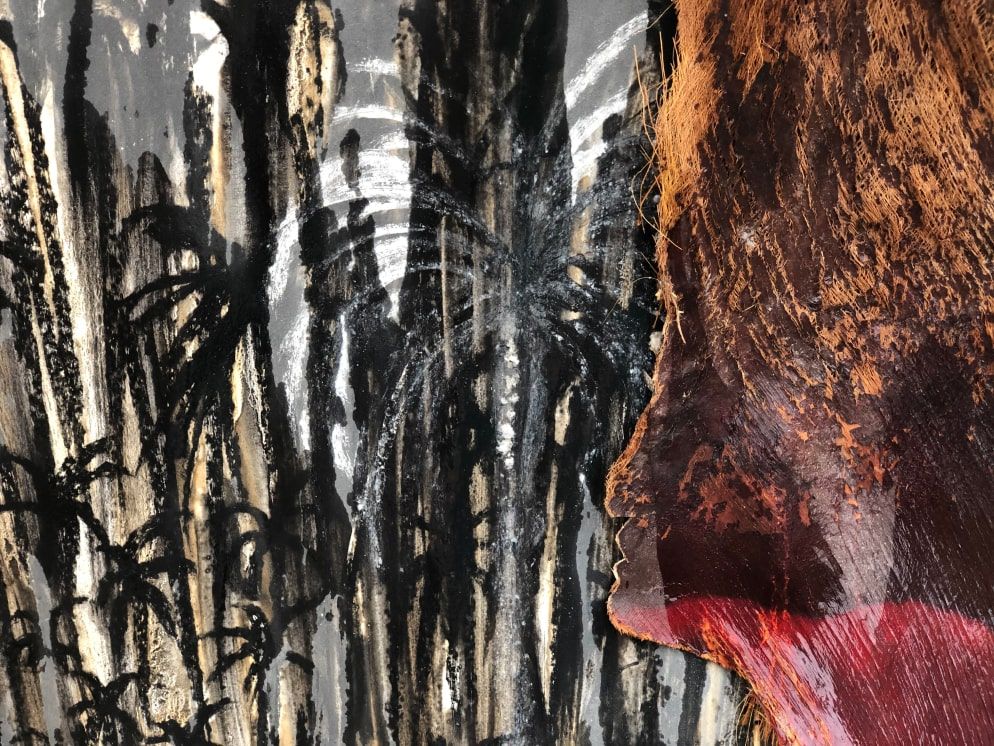Lessons from our Elders
‘The art of coffee,’ by Reem Al-Sadoun.
Growing up, I remember playing in the garden with my cousins at my grandfather’s house, watching the adults engage in deep discussions around a cup of Turkish coffee. The adults and children then dispersed as the sun began to set, and nothing remained in the coffee saucer except for the thick tar-like coffee sediment.
I would then observe my grandmother dump the leftover Turkish coffee with excess water from the kitchen and later sprinkle it onto the soil surrounding the many plants that composed her garden. Years later, I would witness the same action in my own home, as my mother tenderly watered her plants with the diluted coffee grounds.
This time, I pressed my mother for answers. She explained that this is a practice she grew up observing her mother and her grandmother do before her, and that what we deemed as “waste” is actually rich in nutrients that allow plants to thrive.
After further investigation, I discovered that this is indeed true; not only do coffee grounds contain nitrogen, calcium, potassium, iron, and many more key minerals that are essential for plant growth, but they also repel pests and other harmful insects. This simple interaction prompted me to reflect on the many habits which promote sustainable practice, which have been passed down to us from our elders.

Since the dawn of the Anthropocene humans have developed an intimate understanding of their environment, cultivating this relationship to survive and thrive and even give back to the environment, thus creating a healthy and interconnected ecosystem. However, carbon emissions have increased to 1.5x the CO2 concentration of pre-industrial levels since the Industrial Revolution.
The increase of CO2 levels has significant implications on our environment, causing increases in average global surface temperatures leading to a loss in biodiversity, rise in sea levels, and more frequent heatwaves and other climate-related catastrophes. To mitigate this, in 2015, over 195 countries came together to sign the Paris Agreement, an international treaty on climate change to limit the rise in globa temperature to 1.5 °C and achieve net-zero by 2050.
The agreement aims to curb carbon emissions by supporting technologies and policies that promote sustainable practices. In the context of the United Nations Framework Convention for Climate Change, sustainability is defined as meeting our present needs (environmental, social, and economic) without compromising future generations’ access to natural resources. While many countries and organizations have developed revolutionary technologies such as carbon capture and storage and introduced policies promoting carbon trade and markets to curb emissions, indigenous communities have long observed sustainability practices that are in line with sustainable development goals.
The Kingdom of Saudi Arabia is home to several terrestrial ecoregions from the arid desert environment in the central region of the Kingdom, the southwestern savannas and woodlands, to the rich marine life in the Red Sea. For a millennium, locals relied on their surroundings, even in the harshest conditions. Looking at the Eastern Province, in Al-Ahasa, home to the largest date-palm oasis, locals have found many uses and applications for palm trees beyond harvesting the date fruit as food. Dates are also used for medicinal purposes to treat gastrointestinal disorders, while pollen is also used for dietary supplements and infertility treatments. Dates and seeds are repurposed to create feed for livestock, and the wood from palm trees and their leaves are employed in the construction of boats, roofing, and even in the creation of baskets and carpeting.
Additionally, leaf-sheaths from palm trees are also fashioned into clothing items and ropes. Essentially, from a single palm tree, locals found many ways to live on palm trees without compromising them. Mangrove trees, a feature of the Eastern Province shores, have also long been regarded and maintained by locals to protect shoreline from degradation and to make use of the abundant fishery products found in their ecosystems.
Looking at the western region of the Kingdom, gardening terraces are a common feature of the western mountains shaped by farmers from the edges of mountains for thousands of years. Terrace agriculture, while ancient, helps preserve soil and optimizes the collection of precipitated water and has proven to be at times more effective than some modern agricultural practices. In recent decades, the practice of terraced agriculture has become significantly scarcer due to increased urbanization.
With that being said, many programs have been developed to revitalize this practice. By exploring the relationship our elders had with their environment and their daily practices, we learn that to live sustainably is to live in harmony with nature, and with care and cooperation with our environment.
Today, the world faces environmental challenges While science affirms the need for global intervention, in addition to current policy and technological developments, perhaps the solution is also to look inward and benefit from the knowledge passed on to us from our elders on sustainable living honed over generations in unison with the environment. Integrating traditional knowledge and mitigation processes into climate action can play a significant role in addressing challenges such as food insecurity, preserving biodiversity, and improving resources management.


